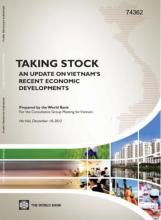Land Library
Welcome to the Land Portal Library. Explore our vast collection of open-access resources (over 74,000) including reports, journal articles, research papers, peer-reviewed publications, legal documents, videos and much more.
/ library resources
Showing items 1 through 9 of 1515.In Africa, the pursuit of gender equality in inheritance rights remains one of the most difficult challenges due to its entrenched patriarchal characteristics. This is also the case in the rural communities of South-Eastern Nigeria.
Across Africa, land is integral to identity and existence. Access to, and ownership of land for women is often problematic – particularly when laws and culture collide.
Agriculture and agribusiness play an important role in the Zambian economy, contributing around 20 percent of gross domestic product (GDP) in recent years and about 12 percent of national export earnings.
Kenya withstood another difficult year in 2012 as policy tightening and weaker global demand slowed economic activity. With decisive fiscal and monetary policies, the government managed to restore confidence in Kenya's medium term prospects.
The Philippine economy has emerged as one of the fastest growing economies in East Asia, with growth accelerating to 7.1 percent in the third quarter.
Developed at the request of the Mexican G20 Presidency for consideration by the Finance Ministers and Central Bank Governors at the G20 Leaders' Summit in Mexico, and jointly prepared with the Asian Development Bank, this policy paper positioned green transport in the context of cities developmen
Infrastructure can be an agent of change in addressing the most systemic development challenges of today s world from social stability to rapid urbanization, climate change adaptation and mitigation, natural disasters, and global issues such as food and energy security.
This paper includes three parts: external economic environment, part one includes: global environment, regional environment, and risks.
Pacific island countries continue to be among the most vulnerable in the world: they combine high exposure to frequent and damaging natural hazards with low capacity to manage the resulting risks.








